Class Stones, Revisited
With Nassau Hall nearly out of space, PAW offers some ideas for the future
Since the end of the Civil War, classes have planted ivy at the base of Nassau Hall and commemorated it with a small stone bearing the class numerals. But Nassau Hall is filling up, and several administrators, the University architect, and representatives of the Alumni Association have begun to contemplate what to do when there’s no more room.
Although there is no assigned date for the group to make its recommendations — there is still enough space for several more years, according to University Vice President and Secretary Robert Durkee ’69 — PAW thought it would be fun to do some brainstorming of its own. With help from Alejandro Zaera-Polo, dean of the School of Architecture, we asked several graduate students — Tyler Hopf, Loren Yu, Manyan Lam, José Meza, Lily Zhang, and Abby Stone — and recent grad Tulip Yeung *12 to apply their creative minds to this challenge.
Their submissions, with explanations, ranged from the practical to the whimsical, and from high-tech to low. Whatever the University decides to do, we hope these ideas will help promote another longtime Princeton tradition: a good old alumni debate.
Future Old Ivy In this renewed perpetuation of Princeton entitlement and manicure, above, images of a sprig of ivy and class year are etched digitally into stone (inset photo). Successive classes carve away old plots of stone while maintaining the tradition of an ivy-covered Old Nassau. — Loren Yu GS and Tulip Yeung *12
Mod-Stones: A Mathematical Ruin Great historical monuments often are steeped in mysterious mathematical concepts. Below, the new ivy stones take a cue from our ancestors to use playful arithmetic logic. Each class stone will be shaped by its graduating year and modular arithmetic — e.g. the graduating year 2013, divided by 3, 4, and 5, produces remainder values of 0, 1, and 3. These numbers determine how many notches will appear on a standard 2-by-4-by-2-foot concrete block, creating jigsaw puzzle-like stones. The way the stones fit together creates a nuanced and unconventional wall with room to sit, climb, or let ivy grow. — Manyan Lam GS
Stone Spiral Stone Spiral, above, creates a radially expanding path throughout campus, with Nassau Hall at its center. The existing class stones will be rearranged chronologically to loop around the building’s perimeter, then extend onto the grounds. Each successive class will mount its stone in the ground, following an expanding spiral pattern that eventually will traverse the entire campus. — Lily Zhang GS and Abby Stone GS
Ivy & Stone Dispersed throughout campus, the existing stones on Nassau Hall, below, take on a new character with new materials and shapes. Each class will select the stone and shape, specialized with insignia or text-based marks. Forming a network that extends across campus, Ivy & Stone details class histories and stone locations through a website and app. — José Meza GS
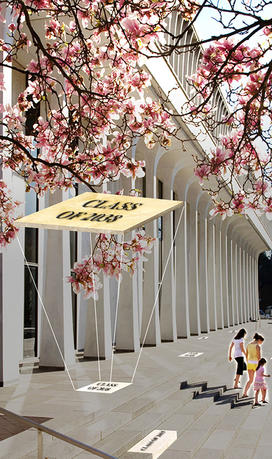
Walk of Stones Modeled after the Hollywood “Walk of Fame,” class stones are spread throughout campus. Each class helps choose where its stone is located. With a new campus map in hand, students and alumni may say, “Meet you at the Class of 2058!” The traditional ivy can be replaced by trees. With a new Walk of Stones, the graduating classes become “famous” in their own right. — Tyler Hopf GS


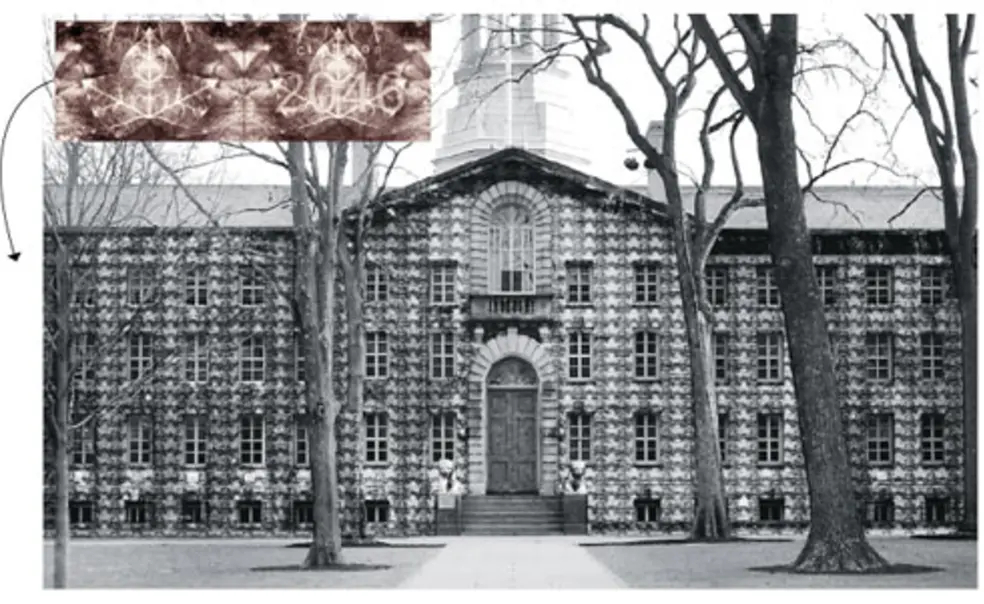
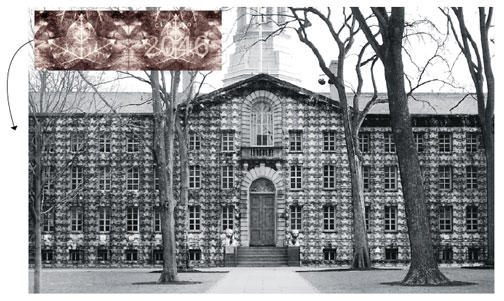
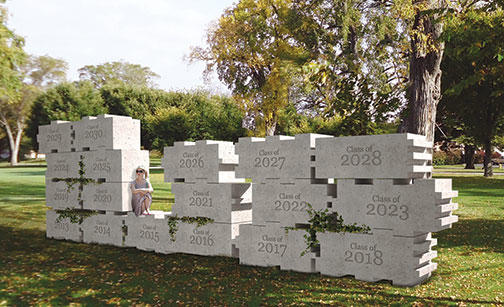
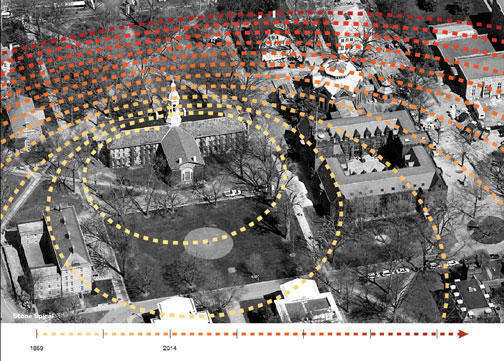
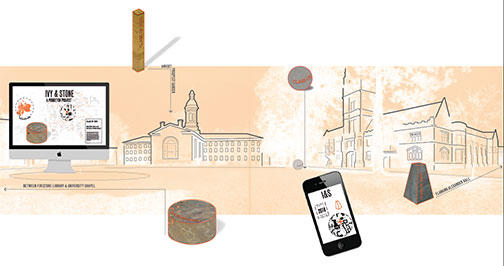









No responses yet